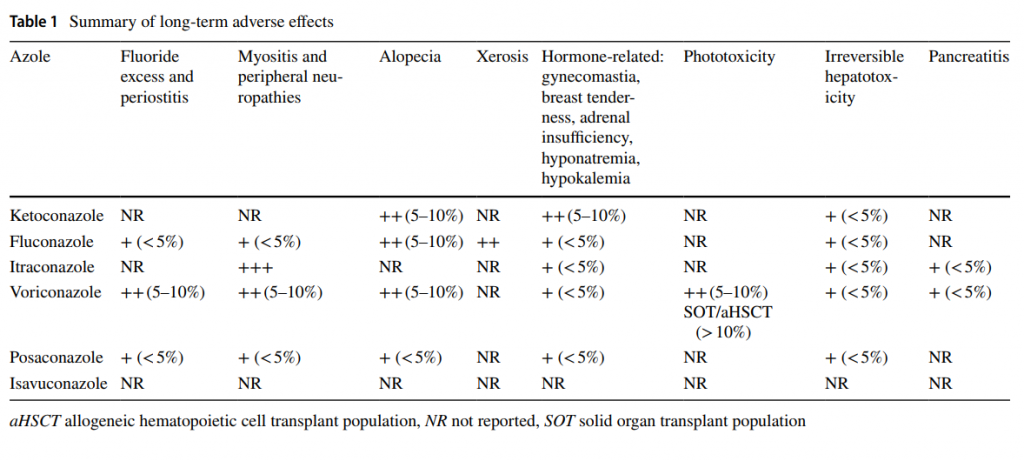SUMMARY: Azole antifungals are the first-line of treatment or prophylaxis for many fungal infections. They are often administered long-term (weeks to months), which can be associated with a number of adverse effects.
Azole antifungals are the first-line of treatment or prophylaxis for many fungal infections. They are often administered long-term (weeks to months), which can be associated with a number of adverse effects. In patients receiving several medications, it can be difficult to identify whether antifungals are contributing to, or causing particular symptoms; recognition of common side effects, leading to treatment discontinuation or management, is therefore key to reducing symptoms and reversing toxicity. A recent review by Dr Lydia Benitez and Dr Peggy Carver summarises these effects and their frequency:

Key points:
- Liver toxicity, generally reversible, is common with all azoles.
- Hormone-related adverse effects are observed with select azoles; these include hair loss, breast enlargement, decreased libido, impotence, and (rarely) adrenal insufficiency (beware drug interactions with inhaled and oral steroids).
- Patients with fair skin on voriconazole should use liberal amounts of broad-spectrum UV protectants and wear sun protective clothing, avoid excess sunlight, and undergo frequent monitoring of skin as phototoxic reactions progressing to development of skin cancer has been associated with long-term use.
- Therapeutic drug monitoring (TDM) may be utilized to minimise neuropathy in specific patient populations on voriconazole, as this are more common with higher concentrations and doses. Its role in preventing other long-term toxicities is less clear.
Azoles are a valuable resource in the treatment and prophylaxis for fungal infections. Despite being associated with a number of adverse effects, they are safer and more active than alternatives. Thorough knowledge of the side effects they may cause is therefore important, so that they can be recognised and managed promptly.
Read Benitez & Carver (2019) Drugs 79: 833
